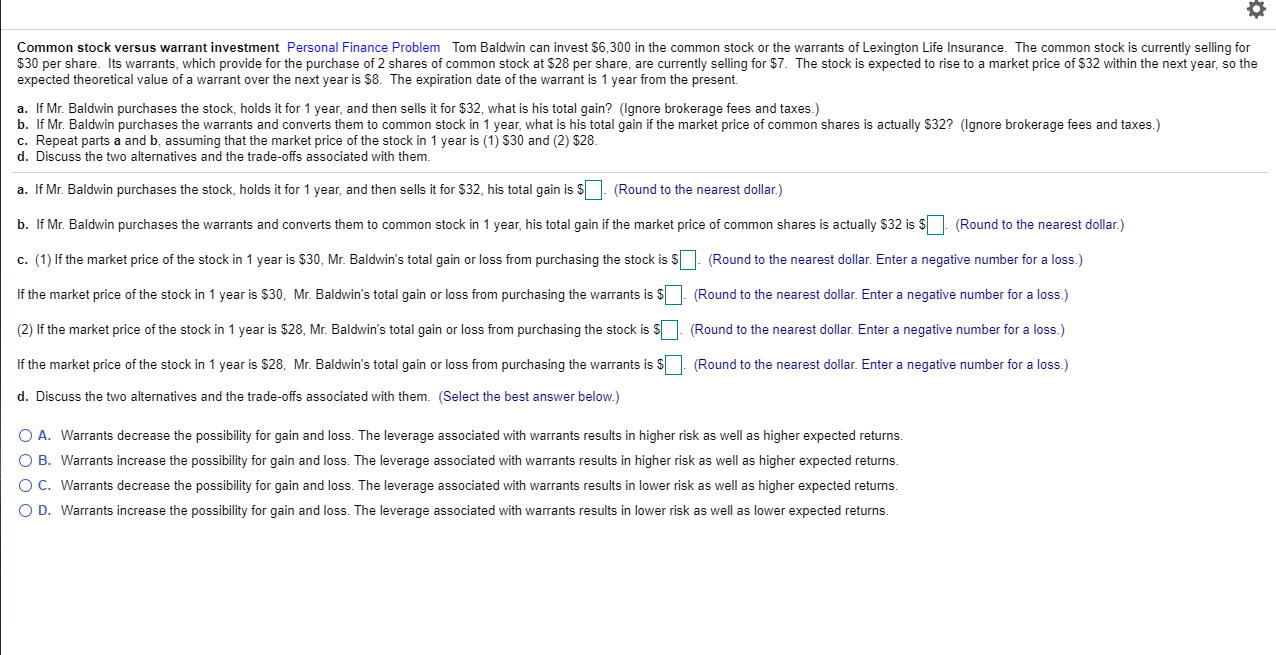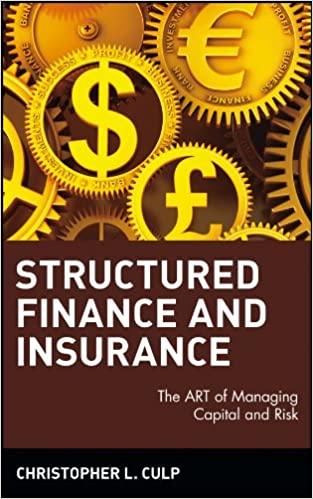
Common stock versus warrant investment Personal Finance Problem Tom Baldwin can invest $6,300 in the common stock or the warrants of Lexington Life Insurance. The common stock is currently selling for $30 per share. Its warrants, which provide for the purchase of 2 shares of common stock at $28 per share, are currently selling for $7. The stock is expected to rise to a market price of $32 within the next year, so the expected theoretical value of a warrant over the next year is $8. The expiration date of the warrant is 1 year from the present. a. If Mr. Baldwin purchases the stock, holds it for 1 year, and then sells it for $32, what is his total gain? (Ignore brokerage fees and taxes.) b. If Mr. Baldwin purchases the warrants and converts them to common stock in 1 year, what is his total gain if the market price of common shares is actually $32? (Ignore brokerage fees and taxes.) c. Repeat parts a and b, assuming that the market price of the stock in 1 year is (1) $30 and (2) $28. d. Discuss the two alternatives and the trade-offs associated with them. a. If Mr. Baldwin purchases the stock, holds it for 1 year, and then sells it for $32, his total gain is $ . (Round to the nearest dollar.) b. If Mr. Baldwin purchases the warrants and converts them to common stock in 1 year, his total gain if the market price of common shares is actually $32 is $ . (Round to the nearest dollar.) C. (1) If the market price of the stock in 1 year is $30, Mr. Baldwin's total gain or loss from purchasing the stock is $7. (Round to the nearest dollar. Enter a negative number for a loss.) If the market price of the stock in 1 year is $30, Mr. Baldwin's total gain or loss from purchasing the warrants is $ (Round to the nearest dollar. Enter a negative number for a loss.) (2) If the market price of the stock in 1 year is $28, Mr. Baldwin's total gain or loss from purchasing the stock is $ . (Round to the nearest dollar. Enter a negative number for a loss.) If the market price of the stock in 1 year is $28, Mr. Baldwin's total gain or loss from purchasing the warrants is $ (Round to the nearest dollar. Enter a negative number for a loss.) d. Discuss the two alternatives and the trade-offs associated with them. (Select the best answer below.) O A. Warrants decrease the possibility for gain and loss. The leverage associated with warrants results in higher risk as well as higher expected returns. O B. Warrants increase the possibility for gain and loss. The leverage associated with warrants results in higher risk as well as higher expected returns. O C. Warrants decrease the possibility for gain and loss. The leverage associated with warrants results in lower risk as well as higher expected returns O D. Warrants increase the possibility for gain and loss. The leverage associated with warrants results in lower risk as well as lower expected returns







